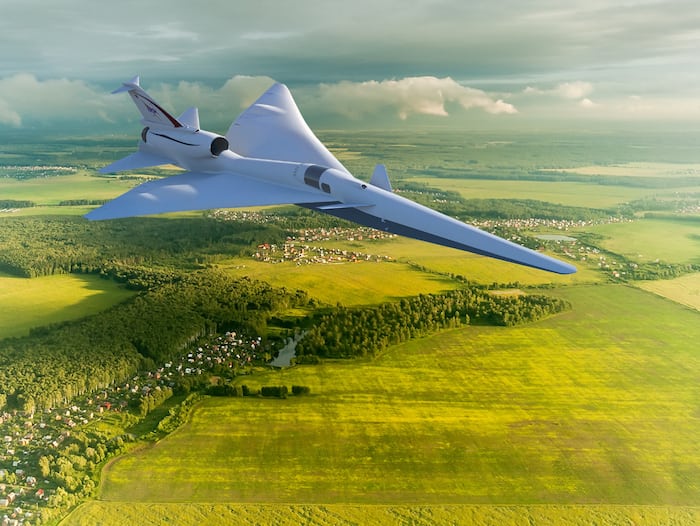
Computer rendering of NASA’s X-59 QueSST aircraft. (NASA)
NASA has selected Core Avionics & Industrial Inc. (CoreAVI) to support development of the external vision system (XVS) on their X-59 Quiet SuperSonic Technology (QueSST) aircraft. Under the contract, CoreAVI will provide its safety critical Vulkan driver (VkCore SC) for the system’s graphics and computing capabilities.
The X-59 QueSST is NASA’s newest experimental aircraft being developed by Lockheed Martin. NASA wants to use the X-59 to demonstrate how a supersonic passenger aircraft could travel over populated areas with people on the ground hearing nothing more than a “sonic thump,” according to the agency’s description of the project.
Lockheed is developing the X-59 to fly at 55,000 feet with a cruising speed of 940 mph. The low boom supersonic demonstrator will produce a sound about as loud as a car door, or a 75 perceived level decibel (PLdB)
NASA wants to replace the pilot’s traditional front window view with sensor display technology in the form of XVS. The agency describes it as a “windowless cockpit display system,” that will feature synthetic vision, object detection sensor fusion capabilities. CoreAVI’s VkCore SC will provide safety-critical graphics and computing to enable the type of display functionality NASA is seeking.
VkCore SC is based on a subset of Khronos’ Vulkan application programmable interface (API) open standard, and is designed for DO-178C design assurance level A (DAL A). Vulkan can allow itself to receive either graphics or compute commands and allocate them to the correct execution unit in the graphics processing unit (GPU), and then render the result on the display.
Before Vulkan, an application that needed both graphics and compute capabilities would have had to run both OpenGL (dedicated graphics API) and OpenCL (dedicated compute API) in the same mixed environment, according to Dan Joncas, executive vice president of sales and marketing at CoreAVI. VkCore SC is the first safety critical Vulkan driver to be introduced for use in avionics systems.
“This is an ongoing development initiative with NASA,” said Joncas. “The nice thing about basing the product on open standards is that future GPUs will support the Vulkan capability. This will allow us to facilitate future upgrades and capabilities.”
NASA expects to have the X-59 ready for supersonic demonstration flights within the national airspace system (NAS) by the end of 2022.